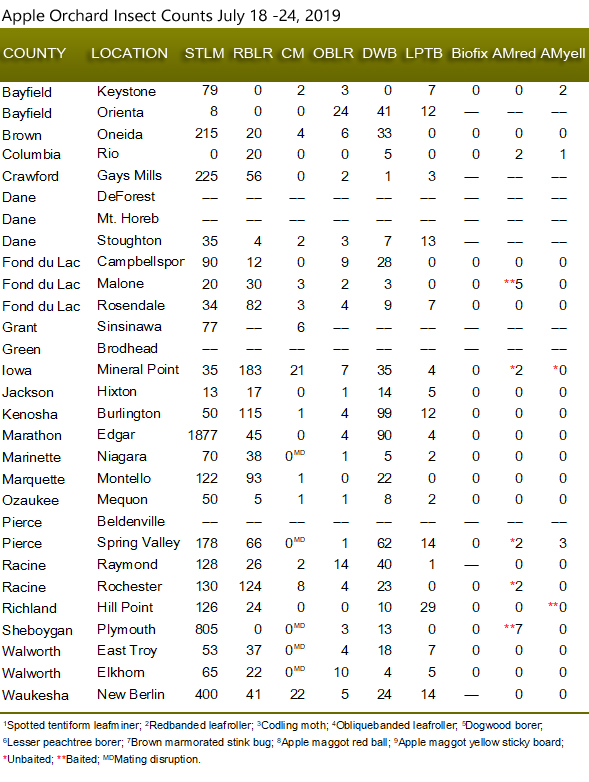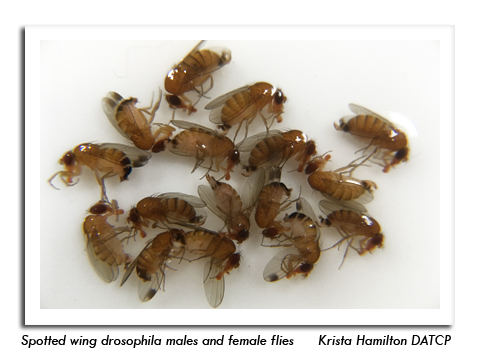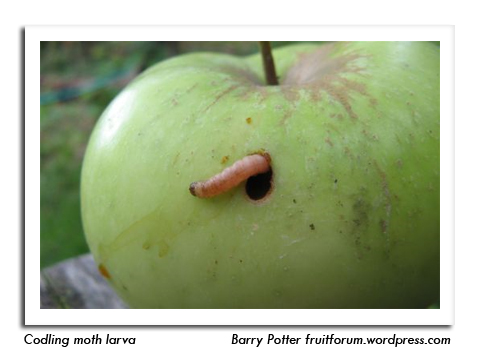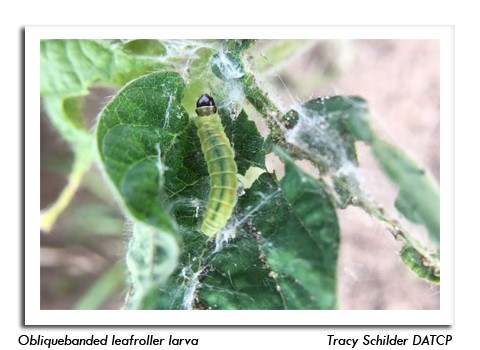
 |
|
|
Fruits
Volume 64 Number 13 Date 07/25/2019 SPOTTED WING DROSOPHILA - Infestations of small fruits are intensifying, and damage has been reported on some fruit farms and in community gardens. Cultural management practices are particularly important for reducing SWD infestation and population buildup at this time. Netted exclusion of the plant canopy, sanitation and orchard/berry floor management, and cooling fruit to 34-38°F immediately after harvest are advised. Chemical control of SWD is intensive and involves insecticide applications at the onset of adult activity to prevent adult egg laying, short intervals between sprays, and insecticide rotation. For organic operations, the OMRI-approved insecticides PyGanic and Entrust are available. A list of insecticide options for conventional small fruit growers can be found on the UW-Madison SWD website: http://labs.russell.wisc.edu/swd/management-2/. APPLE MAGGOT - Emergence is variable but generally increased slightly this week in Wisconsin orchards. Economic counts of 1-2 flies per unbaited trap and 5-7 flies per baited trap were reported from Columbia, Iowa, Fond du Lac, Pierce, Racine and Sheboygan counties. Growers should reapply sticky coating to traps and maintain apple maggot controls as long as counts exceed the established economic thresholds of one fly per trap per week on unbaited traps or five flies per trap per week on baited traps. CODLING MOTH - Most apple orchards are beyond the summer biofix and treatments targeting second-generation larvae have started. Pheromone trap counts at this time can indicate the effectiveness of first-generation control or highlight deficiencies in the current codling moth management program. If using organophosphates (Imidan) for control of the summer generation, growers should replace trap liners before an application to monitor the effectiveness of the material. Moth counts that do not decline to zero or near-zero following treatment suggest resistance issues have developed and use of organophosphate material should be discontinued. OBLIQUEBANDED LEAFROLLER - Larvae are primarily in the late instars in the southern and western counties. Beyond the first and second instars, this leafroller becomes increasingly difficult to control and much of its feeding damage has already occurred. Emergence of the summer brood of moths is anticipated by early to mid-August. POTATO LEAFHOPPER - Pressure in orchards is the highest in several years. One- to two-year-old, non-bearing apple trees are most susceptible to leafhopper feeding and should be monitored for leaf curling and yellowing caused by the adults and nymphs. Treatment is justified at levels of one or more nymphs per leaf when symptoms are evident. SPOTTED TENTIFORM LEAFMINER - The second flight has peaked in most southern and central apple orchards and sapfeeder larvae are reappearing. The economic threshold for the third and final generation increases to five mines per leaf. STINK BUG - Surveys in field crops suggest that activity is escalating and stink bugs are likely to start invading orchards in greater numbers. Growers can begin inspecting fruits in the week ahead for dimples or dark, irregular circular depressions typical of stink bug feeding, and should flag sites with multiple depressions on the same fruit or tree. Damage is often limited to specific areas in the orchard and depending on the distribution of the population, spot treatment may be adequate. -- Krista Hamilton, DATCP Entomologist JAPANESE BEETLE - Apple orchards in southern and western Wisconsin are reporting heavy beetle populations (especially on 'Honeycrisp'), with significant damage to foliage and the terminal ends of branches along orchard perimeters. If the beetles are causing unacceptable injury and treatment is required, growers can minimize insecticide use by spot treating only the most infested varieties. Insecticide options for this pest are limited. Growers who prefer a reduced-risk approach can apply a neonicotinoid at the first sign of feeding injury and before large aggregations appear. Neonicotinoids, e.g., Assail (acetamiprid), Actara (thiamethoxam), offer good repellency and mortality within a few days. Additionally, imidacloprid products, e.g., Admire Pro, Alias, and Wrangler, applied for apple maggot, have anti-feeding properties and should also offer some Japanese beetle repellency. If beetle populations are large, applying a "knock-down" or contact insecticide such as PyGanic (pyrethrins) may provide control. Organic producers have the option of applying PyGanic (pyrethrins) or neem (azadirachtin) oil products, e.g., Azadirect, Neemix, and Trilogy. It is important to be aware that a botanical insecticide such as neem may be phytotoxic if tank-mixed with other pesticides. -- Peter Werts, IPM Institute 





|
|
|